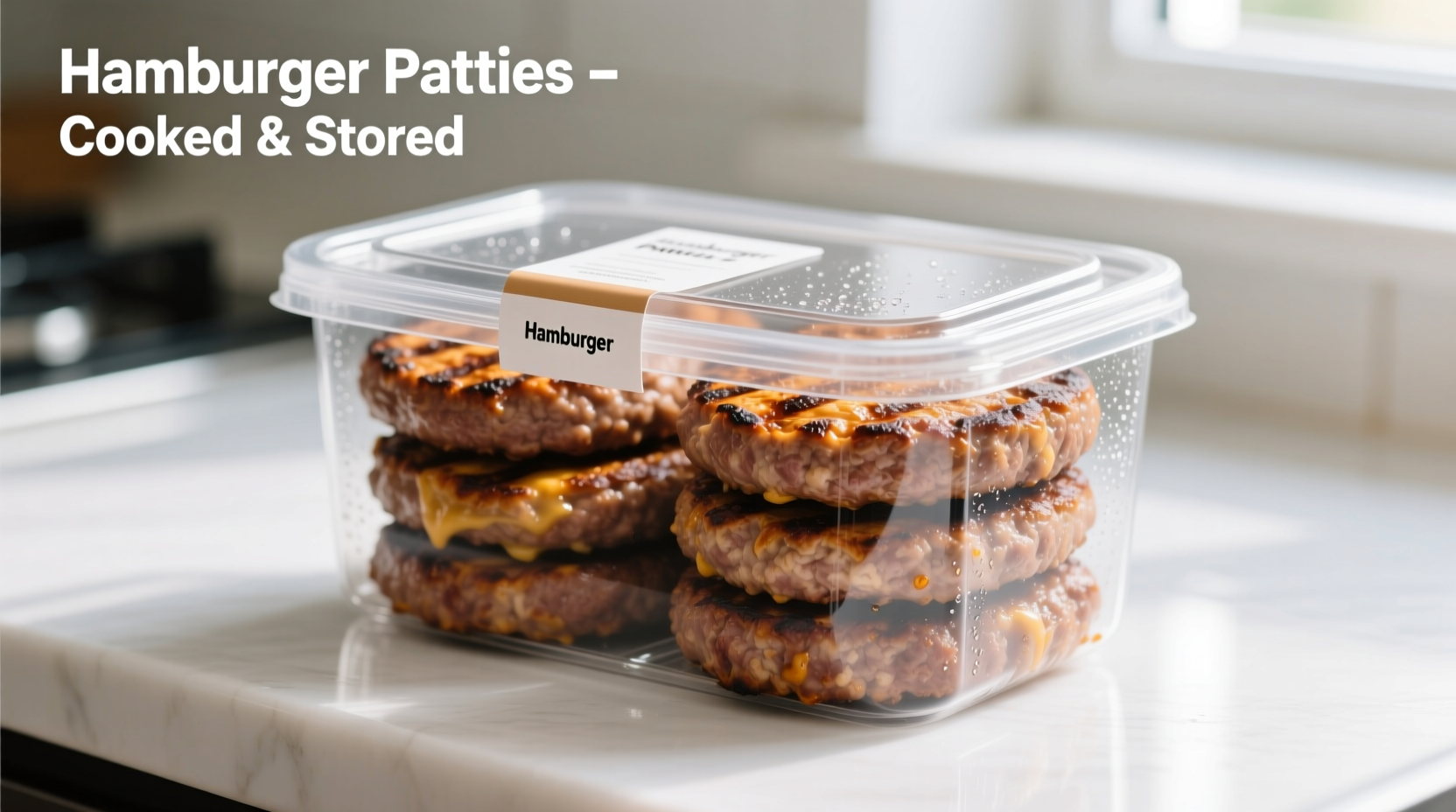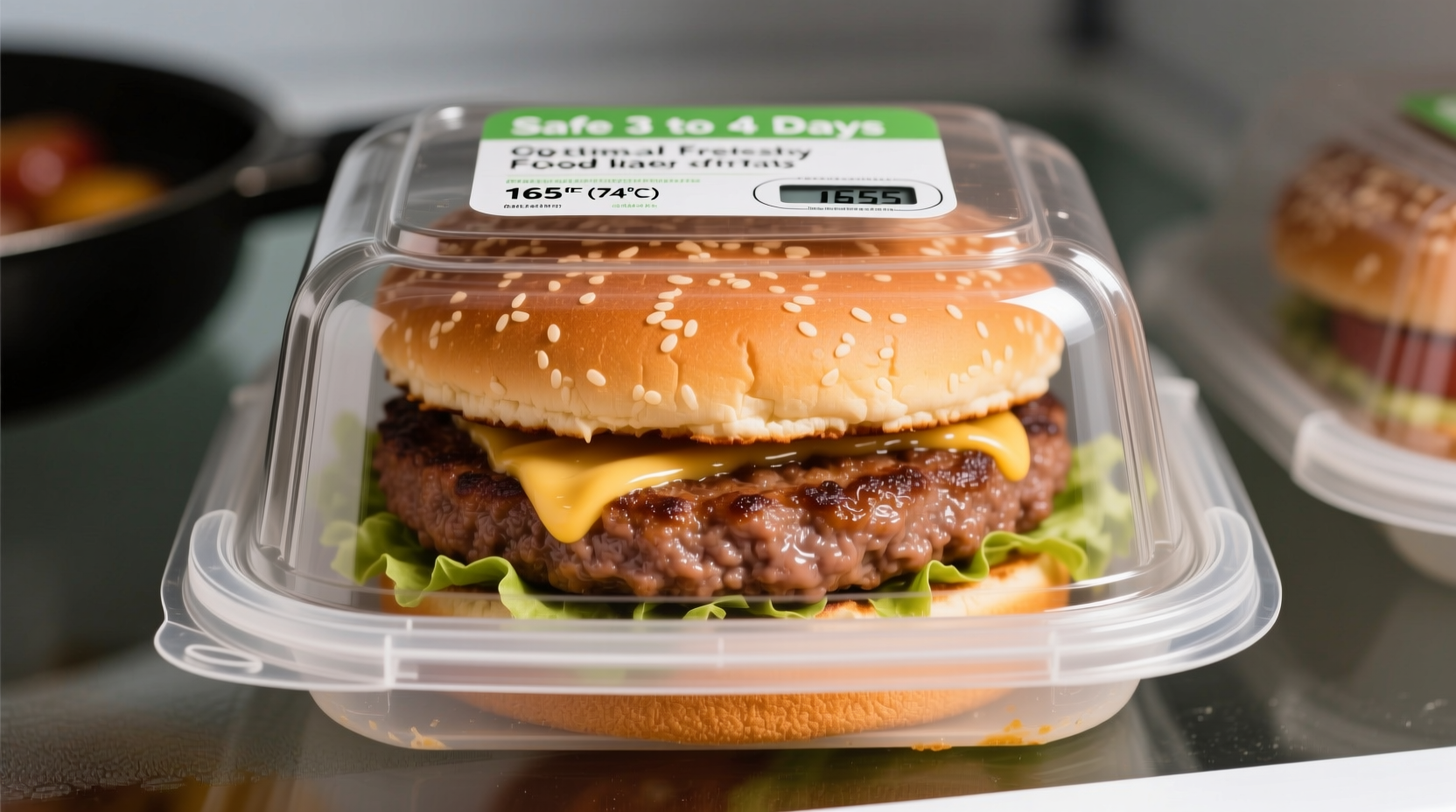Nothing ruins a perfectly good meal prep session like discovering spoiled leftovers. Understanding exactly how long cooked hamburger stays fresh in the refrigerator prevents food waste while keeping your family safe from foodborne illnesses. This guide delivers science-backed storage guidelines directly from food safety authorities, so you'll never have to guess whether those leftover patties are still good.
The Science Behind Safe Hamburger Storage
When you cook ground beef, you eliminate harmful bacteria through heat. However, once the patties cool, new bacteria can begin multiplying if conditions are right. The USDA explains that cooked hamburger enters the "danger zone" (40°F-140°F) where bacteria like Staphylococcus aureus and Listeria can double in number every 20 minutes. Ground beef spoils faster than whole cuts because the grinding process distributes bacteria throughout the meat.
Official Refrigeration Guidelines You Can Trust
The U.S. Department of Agriculture's Food Safety and Inspection Service (FSIS) provides clear recommendations for cooked hamburger storage. These guidelines reflect current food safety research and represent the gold standard for home food handling.
| Storage Method | Recommended Duration | Maximum Quality Period |
|---|---|---|
| Refrigerator (40°F or below) | 3-4 days | 3 days for best quality |
| Freezer (0°F or below) | 4 months | 2-3 months for optimal taste |
Source: USDA Food Safety and Inspection Service
How to Recognize Spoiled Cooked Hamburger
Before consuming refrigerated cooked hamburger, perform these safety checks. Don't rely solely on the calendar—your senses provide crucial information about food safety.
- Visual inspection: Look for grayish or slimy appearance, mold growth, or unusual discoloration
- Smell test: Trust your nose—sour, ammonia-like, or rotten odors indicate spoilage
- Texture check: Slimy or sticky surface texture means bacteria have multiplied
- Time verification: Always check your storage timeline—never consume beyond 4 days
When in doubt, throw it out. The USDA emphasizes that "if cooked hamburger has been in the refrigerator for more than 4 days, it should be discarded regardless of appearance or smell."

Maximizing Freshness: Best Storage Practices
How you store cooked hamburger directly impacts its safe storage duration. Follow these professional food handler techniques to maximize freshness while maintaining safety:
- Cool rapidly: Divide large batches into smaller portions to cool faster—never put hot patties directly in the refrigerator
- Use proper containers: Store in airtight containers or heavy-duty freezer bags with minimal air exposure
- Label everything: Mark containers with contents and date using waterproof labels
- Refrigerate promptly: Place cooked hamburger in the refrigerator within 2 hours (1 hour if room temperature exceeds 90°F)
- Store strategically: Keep in the main compartment of the refrigerator, not in the door where temperatures fluctuate
Reheating Leftover Hamburgers Safely
Proper reheating destroys any bacteria that may have developed during storage. The FDA Food Code specifies that cooked leftovers must reach an internal temperature of 165°F to be safe for consumption.
For best results when reheating cooked hamburger:
- Use a food thermometer to verify internal temperature reaches 165°F
- Add a splash of broth or water to prevent drying during reheating
- Reheat only the portion you plan to eat—repeated cooling and reheating accelerates spoilage
- Avoid slow reheating methods that keep food in the danger zone too long
Special Considerations for Food Safety
Certain situations require modified storage guidelines. Understanding these context boundaries helps prevent foodborne illness in vulnerable circumstances.
Vulnerable populations: For infants, elderly individuals, pregnant women, or immunocompromised people, consider consuming cooked hamburger within 2-3 days rather than the full 4-day window. These groups face higher risks from foodborne pathogens.
Added ingredients: Hamburgers containing sauces, vegetables, or other ingredients may have shorter safe storage times. For example, cooked hamburgers with tomato slices or mayonnaise should be consumed within 2-3 days due to the additional moisture and acidity.
Power outages: During refrigerator power loss, keep the door closed. Food remains safe for approximately 4 hours if the refrigerator stays closed. Discard cooked hamburger if the temperature rises above 40°F for more than 2 hours.
Debunking Common Leftover Myths
Several persistent myths about leftover safety could put your health at risk. Let's clarify the facts:
- Myth: "If it smells okay, it's safe to eat"
- Fact: Dangerous bacteria like Listeria don't always produce noticeable odors
- Myth: "Freezing resets the clock on refrigeration time"
- Fact: Freezing stops but doesn't reverse bacterial growth—thawed leftovers continue aging from their pre-freeze state
- Myth: "A quick reheat kills all bacteria"
- Fact: Some bacteria produce heat-stable toxins that reheating cannot destroy
Remember that how long cooked hamburger remains good in the refrigerator depends on proper handling from cooking through storage. Following these evidence-based guidelines ensures you enjoy your leftovers safely while minimizing food waste.











 浙公网安备
33010002000092号
浙公网安备
33010002000092号 浙B2-20120091-4
浙B2-20120091-4